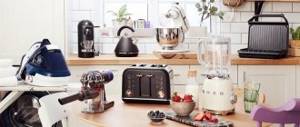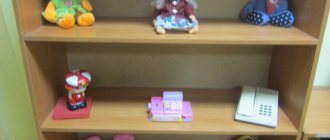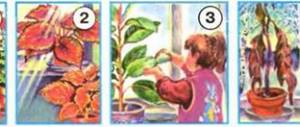Which indoor plants for the home are especially loved?
From a botanical point of view, green friends are divided into different types depending on their appearance and maintenance requirements. Let's not indulge in botanical terms, but let's get to know the wonderful tenants better.
Photophilous
Among the light-loving flowers there are those that will help in vertical and horizontal gardening. The main condition for keeping is access to light. This does not mean that it is necessary to place the pot under the scorching rays of the sun, but you should not take the flower far from the window.
An unpretentious beauty that can become the ideal missing puzzle of a design ensemble - header ivy
Thanks to the frame base, you can get different shapes of lashes
Ivy grows quite quickly and does not require shamanic dances with a tambourine: it is enough to apply fertilizers on time and do not forget about watering.
Peperomia obtufolia needs diffused light due to its light-colored leaves
There are many types of pereromia: some of its varieties feel good in shady corners, but the lighter the color of the foliage, the more light the plant needs.
Chlorophytum will clean the air from tobacco smoke and various harmful impurities
Chlorophytums grow beautifully in the form of a wonderful bush, and flower children on long hanging stems also look interesting. This flower can be considered a generalist, since it can be accustomed to a lower level of illumination.
Scindapsus can be called the king of decor: a small bush at first suddenly grows and fills the entire wall
Thanks to this feature, the flower can easily be formed into wall panels, beautifully hanging from flowerpots or decorated in the form of indoor arches.
Those plants that grow well in dark corners of the apartment
The popularity of shade-loving flowers is obvious and understandable: not every home can please you with an abundance of daylight, and there are plenty of dark places in any home. Many plants will not have problems adapting to such conditions. We are not talking about complete darkness, but there are seven-flowered flowers that can grow well in artificial lighting.
Sheflera grows into an impressive tree and looks very decorative in any corner
If the window is north-facing, then the pots are not placed further than 2 m from the light source; a distance of 3 m is allowed from any other windows.
Ferns like Nephrolepsis or Dawallia are often hung or displayed on wall shelves or cabinets
The beauty of decorative deciduous shade-tolerant flowers is affected by the level of illumination: sometimes it is enough to move the pot 10-15 cm, and the beauty and color of the leaves will sparkle in a new way.
Aglaonema changeable with numerous varieties suits many: different leaves in shape and color, with or without spots or stripes
Exotic in the house
Exotic plants can be both unpretentious and very demanding. The common thing that distinguishes them from others is their appearance, which is unusual for many people. Exotics can be used in different interior styles and floral arrangements.
Tillandsia blue with its bright spikelet, on which violet-lilac flowers bloom in autumn, is spectacular
Tillandsia grows very slowly, but if you maintain high humidity around, your apartment will soon be decorated with an unusual plant.
Euphorbia tirucalli looks fancy
The flower is a succulent, its branches are leafless, and the milky sap is poisonous—in a home with small children, such a pet can become dangerous.
A representative of the Gesneriev family was named Hypocyrta naked. Although it’s even strange to call a flowering plant with an abundance of foliage naked
How to grow plants at home
Also check out these articles
- Red currant - cultivation and care
- Slaked lime for the garden
- Ageratum flowers - growing and care
- Winter varieties of apple trees
Caring for indoor plants is not difficult if you get the hang of it. Of course, at first it may seem that you need to carry out too many different procedures, but in fact, plants are the easiest pets to keep.
- Watering for each plant may differ in abundance and frequency. On average, flowers are watered 2 times a week in summer and 1 time a week in winter. But it is better to be guided by the condition of the soil; it should not dry out. If there is too much water, the roots will begin to rot.
Watering for each plant may differ in abundance and frequency.
- Fertilizers for indoor plants are just as important as for garden crops. But they must be applied according to the strict dosage indicated on the drug packaging. An abundance of fertilizers can lead to the death of the plant and rotting of the roots. For indoor plants, you can buy a wide variety of fertilizers, from minerals in liquid or dry form, to various tablets and sticks that are placed in the ground to replenish as watering occurs.
Important!
For indoor plants, you can use not only mineral, but also organic fertilizers as fertilizers.
- Reproduction . As the flower develops, it can be propagated. Various methods are used for reproduction. For example, chlorophytum and Kalanchoe are propagated by shoots, dracaena by cuttings, eucharis and amaryllis by adventitious bulbs, and violet and monstera by leaves. Also, almost all plants can reproduce by seeds.
- Transfer carried out as the plant grows out of the old pot. In addition, this procedure is recommended once every 2-3 years simply to replace the soil, even if the pot is still suitable. When replanting, the soil completely changes, although this depends on the type of procedure - sometimes plants are replanted with a lump of earth.
Replanting is recommended once every 2-3 years just to replace the soil
- Soil type . The choice of soil type has to be faced when replanting a plant for the first time. If you are not sure what kind of soil to take, you can go to a flower shop and they will tell you which kind of soil to choose for which flower.
- Pruning is not always carried out and not for all indoor plants, but if we are talking about some kind of branchy bush, then, most likely, you will have to trim the branches so that the flower has a well-groomed, beautiful appearance.
- Diseases and pests can appear on plants even if they have never been brought into the yard. The cause of the appearance may be improper care, contaminated soil, diseased crops nearby, etc. Diseases can be viral or fungal. The plant may also suffer from physical problems (broken branches, roots). To treat diseases and destroy pests, fungicides (such as Vectra, Baktofit, Oxychom) and insecticides (Fitoverm, Gaupsin, Bi-58 Novy) are used strictly according to the instructions.
The technology for growing indoor plants is similar among different crops, although it has differences. The care procedures are always the same, but the requirements of the flowers may be different in terms of the type of soil, the amount of watering, etc.
Learning to zone space using plants
In modern studios or very spacious rooms, there is often a need for proper zoning of space. It is worth trying to involve green spaces in this useful activity - and the air will become more pleasant and the eye will be pleased.
There are several ways to place indoor plants for zoning purposes:
- rack;
- wall;
- ampel hanging flowers.
- zoning with large flowers.
Plants should be selected taking into account their wishes in terms of illumination level, external compatibility, and you will also need to study the dormant and flowering periods of candidates for a flower rack or wall.
A wall composition can consist of one type of plant, preferably hanging varieties - such a wall looks simply classy!
A wall or shelving is created from a set of plants that differ in shade and leaf shape
The main condition is to monitor the health of each green pet, because if pests infest one of them, a disastrous epidemic of the entire composition will very quickly break out.
Vertically growing unpretentious sansevieria easily become an organic idea in design
The shelving looks light, does not interfere with the visualization of space and properly performs its function of dividing the room into zones
It is not necessary to divide the room; it is enough to simply accent an important area with hanging vines
Vessels and equipment
In order to grow crops yourself without using soil, you need to decide which method will implement this task. Next, you need to select equipment in accordance with the chosen technology and install it correctly.
When organizing a growing system without soil at home, as a rule, hydroponics is chosen as the simplest method, which is quite easily implemented in a house or apartment. To grow using the hydroponic method you need:
- containers for planting that have slits or holes so that roots can grow through them and gain access to water with a nutrient composition;
- containers in which pots are placed;
- compressor, tubes and submersible sprayer to supply air to the roots.
If we talk about aquaponic systems, they are often used by those who already breed ornamental aquarium fish. In this case, you may choose to place the installation directly above the aquarium.
Where and how to place plants in different parts of the rooms
The placement of pots, tubs and cache-pots cannot be spontaneous: in addition to the fact that it is easy to make a mistake with the wishes of the plants, it is also easy to spoil the impression of the interior if you place a flower in the wrong place. Let's figure out where and what flowers should be placed.
Wall decorations
Flowers can appear on walls as residents of shelves or special wall planters. They look for a place among books, figurines, between paintings.
A couple of flowers on the walls will not draw all the attention to themselves, but they will place accents favorably. One bush can be small and represent an exotic species like an unassuming succulent, and the second can gracefully hang down to the floor
Young plants like monstera, ficus, aspidistra and asparagus feel good on the shelves. If the size of the green decoration becomes large, then it simply moves into the tub on the floor
The room is decorated in an original way with tiered ladder shelves. On each step there is a small exclusive flower. Of course, with this placement they should not shade each other too much
Floor arrangement
Only the largest and tallest green giants are given the honor of standing on the floor. This includes adult monstera, coffee, lemon, palm trees, and ficus. The plant tub is usually quite large, so its appearance should not spoil the space or interfere with the flow of the room.
Large trees are located closer to vertical surfaces. If there is a large tree in the room, then this will be enough for lovers of minimalism
Bamboo is quite exotic and does not suit classic design as well as minimalism, hi-tech, and art deco.
Green and blooming paradise on the windowsill
The most common place for flowers is the windowsill. But if the windows face south, the seedlings will not last long under the scorching sun. Therefore, residents are placed on the windowsill on the northern and eastern windows, less often on the western ones. The northern window is suitable for some succulents, shade-tolerant species and plants in a dormant period - flowers there do not get enough light. East and west are more or less neutral and allow you to test the window sill as a floral living space.
If you want to decorate a window sill with flowers, be guided by the size of the window and the window sill itself: it is better to pay attention to small flowers that will not grow particularly large and will not interfere with each other by their proximity
It’s great when all the pots match in color, texture and material
It is good to place flowers of the same type on the windowsills
On stands
Floor stands change the impression: the same plant is perceived completely differently just standing on the floor and arranged like a king in a beautiful stand.
The stand can be forged, plastic, chrome-plated, wooden, as well as low, high, for one pot or several. The style of the stand also differs.
Forged coasters are suitable for modern, classic, baroque styles
Stands on one leg must be very stable so as not to shake and fall if accidentally touched lightly. Such products are placed away from the aisles
Wooden stands are very decorative and serve as a good backdrop for any flowers.
Indoor plants and interior: what is best for different rooms of the house
Placing poisonous plants in a nursery is pure madness, and filling the living room with flowers in such a way that it is impossible to walk through is also not an option. Let's try to find the best option for decorating different rooms with living plants.
Living room and study
For the living room, we leave large trees in tubs: hibiscus, dollar tree, all kinds of palm trees, vriesia, ficus. You should try placing anthurium or spathiphyllum on the coffee table.
Artificial wall compositions do not distract attention from living palm trees
Bright living rooms are perfectly shaded by plants with dark green leaves.
A chic look is provided not only by furniture and decoration, but also by beautiful flowering plants.
Living green walls and compositions from groups of different plants are suitable for living rooms. However, a living wall would also be appropriate in an office.
A desk at your workplace will only benefit from placing an unusual terrarium with different types of small-sized plants on it.
Cabinets should not be piled up with greenery; it is better to place one or two large plants here than many small ones.
Bedroom and children's room
The bedroom allows our body to rest, and if there is an additional source of oxygen there, then the rest is truly fabulous. Best friends in the bedroom are chlorophytum, kalanchoe and aloe.
One royally overgrown fern transforms a room
Flowering plants are placed in the bedroom with caution: some strong-smelling plants, although they look beautiful, can cause constant headaches
The nursery cannot be filled with a lot of pots and stands: why place a lot of flowers there if the pots will end up on the floor anyway? Even the most careful kid can accidentally push over his beloved green friend. If you really want to populate the nursery with greenery, then it’s better to place the pots on the windowsill - this way the child will be less tempted to climb there himself.
Loggia and balcony
If the loggia or balcony is glazed, then they are guided by the same principles with the cardinal directions as for windows. With open options it is somewhat more difficult, since the flowers will not be shaded by almost anything.
Pots are placed on walls where there is diffused sunlight or directly on the windowsill, if the side of the world allows.
A row of identical plants looks stylish
Flowers look good on window sills, on the floor, on a table
Where else if not on the balcony to place a flower greenhouse? You just need to remember that the abundance of greenery on the balcony or loge will significantly reduce the amount of light penetrating into the room through this wonderful kingdom of living nature.
When creating their creative projects for future interior and design, they focus on other people’s experience, their own views on decor and do not forget about the needs of the plants themselves.
Growing indoor plants with hydrogel
We recommend reading our other articles
- Slurry
- Fennel - cultivation and care
- Fertilizer for hydrangea
- Fungicide Hom
Hydrogel or aqua soil is one of the options for growing flowers without soil. This is a modern material that can be used instead of soil in a pot or to create beautiful flower arrangements. When dry, it appears as dry balls or crystals, but as water is absorbed, the hydrogel can increase to 1.5 cm in diameter. There is also ready-made aqua soil on sale, in the form of jelly-like pieces. It is non-toxic, sterile, and can be used at high and low temperatures.
Hydrogel or aqua soil is one of the options for growing flowers without soil
Any herbaceous indoor plants, as well as many trees and bushes, can be grown in pots with hydrogel. But experts do not recommend replanting adult plants into it. It is better to plant young crops in the hydrogel; it will be easier for them to adapt.
Caring for plants in hydrogel is almost the same as caring for those growing in the ground. But they need to be watered rarely, since the hydrogel contains a lot of water, and fertilizers for plants are taken differently and in a different concentration. Also, in this case, replanting is not required, but sometimes you can take out the plant, wash the hydrogel and put the culture back in place.
Important!
From time to time you may notice that the hydrogel begins to dry out. It will shrink and become a brighter, matte color. At this time, you need to add water so that the aqua soil swells again.








